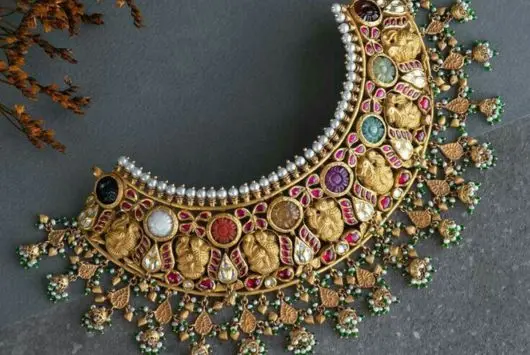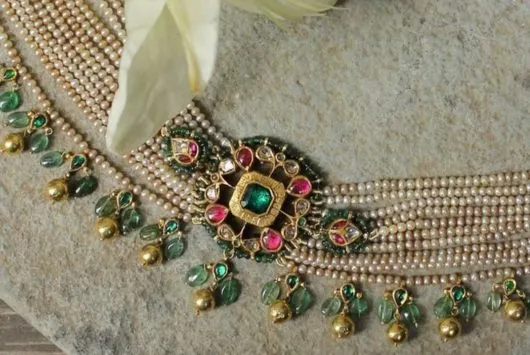ANTIQUE JEWELRY
Antique Jewelry is highly valued for its history, craftsmanship, and unique designs. Here are the specifications and characteristics commonly associated with antique Jewelry:


1. Age Classification
Antique: Generally refers to Jewelry that is over 100 years old.
Vintage: Jewelry that is at least 20 to 100 years old.
Estate: Previously owned pieces, which can be antique or vintage.
2. Materials Used
Metals: High-quality materials like 18k or 22k gold, platinum, and sterling silver.
Gemstones: Diamonds, rubies, sapphires, emeralds, and pearls, often in their natural, untreated forms.
Enamel Work: Many antique pieces feature intricate enamel detailing, adding color and design.
3. Design Styles
Georgian Era (1714-1837): Known for intricate, nature-inspired designs. Jewelry was often handmade with stones like garnets and topaz set in silver or gold.
Victorian Era (1837-1901): Spanned various styles, from romantic and sentimental pieces with lockets and brooches to more elaborate and bold designs with gemstones like amethysts and opals.
Edwardian Era (1901-1915): Characterized by delicate, lace-like designs, often with platinum settings and diamonds.
Art Nouveau (1890-1910): Focused on flowing, organic shapes and motifs like flowers and fairies, featuring enameling and gemstones like moonstones and opals.
Art Deco (1920-1935): Notable for geometric patterns, bold designs, and contrasting colors using diamonds, emeralds, and onyx.
Retro Era (1940s): Pieces were larger and more colorful due to wartime metal shortages; used materials like rose gold and semi-precious stones.
4. Gemstone Specifications
Cut: Antique Jewelry often features old cut styles such as the Old Mine Cut, Rose Cut, or Cushion Cut, which differ from modern cuts by having fewer facets and a more natural, less precise shape.
Color: Gemstones may have unique hues that are less commonly seen in modern pieces, as older Jewelry often used naturally colored stones.
Clarity: Many antique gemstones may show inclusions, as treatments were less common in older times.
5. Craftsmanship
Handcrafted: Antique pieces were typically made by hand, showcasing detailed workmanship that includes hand engraving, filigree, and milgrain edges.
Techniques: Techniques such as repoussé (metal hammered into a design) and chasing (metal worked from the front side) were common.
Settings: Prong, bezel, and gypsy settings were popular, depending on the era.
6. Hallmarks and Stamps
Hallmarks: Indicate the metal content, manufacturer, and sometimes the country of origin. Hallmarks can help date the piece.
Maker’s Mark: Signifies the jeweler or the company that created the piece.
7. Condition and Restoration
Original Condition: Higher value is placed on pieces that retain their original stones and structure.
Restoration: Minor repairs that preserve the original design are acceptable, but extensive restoration can reduce value.
Patina: A natural patina, or tarnish, can indicate age and authenticity.
8. Design Motifs
Nature Motifs: Flowers, leaves, and animals were popular in the Georgian and Victorian eras.
Symbolism: Heart shapes, lover’s knots, and serpent motifs were common in sentimental pieces.
Cameos and Intaglios: Carved gemstones depicting portraits or scenes were widely used in antique Jewelry.
9. Rarity and Uniqueness
Limited Editions: Most antique pieces are one-of-a-kind or limited due to the handcrafted nature of their creation.
Historical Significance: Pieces linked to specific events or people may carry higher value due to their provenance.
10. Jewelry Types
Brooches and Pins: Common in Victorian and Art Nouveau styles.
Necklaces: Long chains, chokers, and pendants with intricate designs.
Bracelets: Often featured engraving or were made as bangles and cuff styles.
Earrings: Drop earrings, chandeliers, and studs with filigree or gemstone settings.
Rings: Engagement and cocktail rings with unique, detailed designs.

